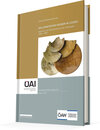Hellenistische Häuser in Lousoi.
Keramik und Kleinfunde aus den Grabungen 1983–1994
von Veronika Mitsopoulos-LeonDuring the excavations of the Austrian archaeological institute between 1983 and 1994, two houses in the town of Lousoi were examined. Built on the northern foothills of mount Helmos, in ancient Northern Arkadia, they had developed as part of the living area, on two natural terraces above the plateau of Soudena.
The houses, generously built with bathrooms and oikoi with decorated hearths, reflect a picture of comfortable living. Installations for wine production and numerous small finds offer insight into the living habits and home-industry of the inhabitants, who processed the products which they gained from agriculture, animal elevation and hunting. During the years, alterations brought change to the architecture, but two major building phases in each of the houses can be discerned, until a special event forced the inhabitants of the second phase to leave the houses. After this break, a thick layer of rubble fell on the floors, containing broken roof tiles, burnt pieces of wood, small finds. Pottery fragments, glass, coins offer a chronological frame in the 3rd/2nd ct. B. C. and the 1st. ct. BC/ 1st. ct. AD. There followed a third building phase at the end of the 2nd./beginning of the 3rd. century. Again, pottery and small finds offer chronological indications.
The two houses show a different development. House 1 was divided into two parts in the second phase through a large wall, it was “modernized” with the addition of a Peristyle. On the contrary, house 2 shows a tendency of more intensive industrial activity, p. ex. production of wine, while reducing the installations of comfortable living. The pottery and small finds offer important contribution for the understanding of house culture in Lousoi. The study of the ceramics includes examination of the fabric, questions referring to local production/ imports and to relations with other centers. Each type and shape is discussed in special chapters. Other objects in clay include lamps, statuettes. Moulds and kiln- supports give proof of local production. Spindle whorls and loom weights emphasize the importance of weaving in the houses. Fragments of vases, jewellery, tools, made of bronze, iron, lead, glass, belonged to the household goods. Lead weights indicate that business activities took place. Of special interest are several prehistoric objects, as until now, with the exception of one example from the sanctuary of Artemis, no such early items were discovered in the area of the Soudena-plateau. They are known however from the region of Kalavrita and the cave at Kastria. Several fragments of tiles and hearths, are decorated with two similar types of stamps; this fact throws light on a local/ regional production of large objects from Lousoi.
The houses, generously built with bathrooms and oikoi with decorated hearths, reflect a picture of comfortable living. Installations for wine production and numerous small finds offer insight into the living habits and home-industry of the inhabitants, who processed the products which they gained from agriculture, animal elevation and hunting. During the years, alterations brought change to the architecture, but two major building phases in each of the houses can be discerned, until a special event forced the inhabitants of the second phase to leave the houses. After this break, a thick layer of rubble fell on the floors, containing broken roof tiles, burnt pieces of wood, small finds. Pottery fragments, glass, coins offer a chronological frame in the 3rd/2nd ct. B. C. and the 1st. ct. BC/ 1st. ct. AD. There followed a third building phase at the end of the 2nd./beginning of the 3rd. century. Again, pottery and small finds offer chronological indications.
The two houses show a different development. House 1 was divided into two parts in the second phase through a large wall, it was “modernized” with the addition of a Peristyle. On the contrary, house 2 shows a tendency of more intensive industrial activity, p. ex. production of wine, while reducing the installations of comfortable living. The pottery and small finds offer important contribution for the understanding of house culture in Lousoi. The study of the ceramics includes examination of the fabric, questions referring to local production/ imports and to relations with other centers. Each type and shape is discussed in special chapters. Other objects in clay include lamps, statuettes. Moulds and kiln- supports give proof of local production. Spindle whorls and loom weights emphasize the importance of weaving in the houses. Fragments of vases, jewellery, tools, made of bronze, iron, lead, glass, belonged to the household goods. Lead weights indicate that business activities took place. Of special interest are several prehistoric objects, as until now, with the exception of one example from the sanctuary of Artemis, no such early items were discovered in the area of the Soudena-plateau. They are known however from the region of Kalavrita and the cave at Kastria. Several fragments of tiles and hearths, are decorated with two similar types of stamps; this fact throws light on a local/ regional production of large objects from Lousoi.






